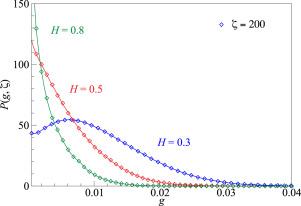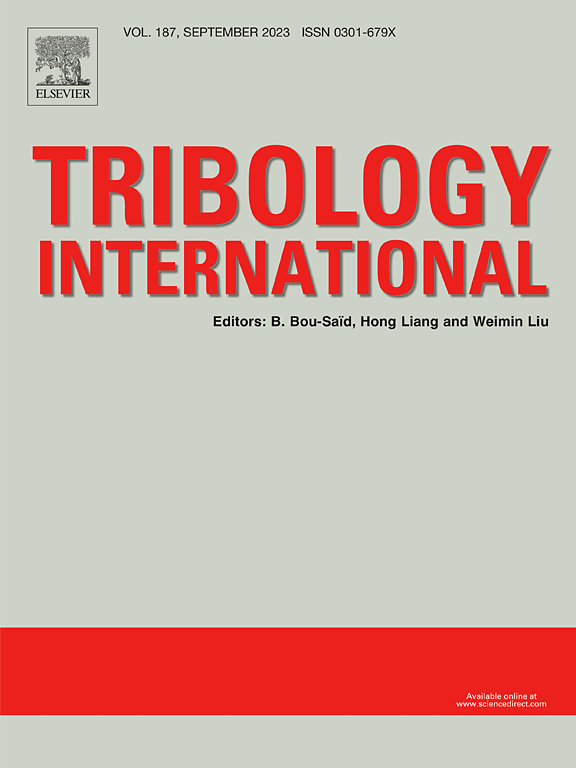数据驱动的增强粗糙接触力学:局部接触跨长度尺度间隙分布的PINN估计
IF 6.1
1区 工程技术
Q1 ENGINEERING, MECHANICAL
引用次数: 0
摘要
在这项研究中,我们采用格林函数分子动力学(GFMD)模拟了半空间和随机粗糙表面在(1+1)维度上的非粘性弹性接触,获得了不同长度尺度和Hurst指数的间隙分布。利用gfmd生成的数据集,并结合对流扩散方程形式(在先前和当前的工作中导出)作为物理约束,我们通过物理信息神经网络(PINN)预测间隙分布。结果表明,在部分接触条件下(解析解不可用),假设漂移和扩散系数随长度标度的pinn预测与GFMD高度一致。此外,使用小规模训练数据,PINN成功地预测了更大尺度上的间隙分布和相对接触区域,与GFMD基准非常匹配。这确立了PINN作为粗糙表面接触问题的有效工具,特别是在缺乏解析解或计算模型过于昂贵的情况下。本文章由计算机程序翻译,如有差异,请以英文原文为准。

Data-driven enhanced rough contact mechanics: PINN estimation of gap distribution across length scales for partial contacts
In this study, we employ Green’s function molecular dynamics (GFMD) to simulate non-adhesive elastic contact between a half-space and a randomly rough counterface in (1+1) dimensions, obtaining gap distributions across varying length scales and Hurst exponents. Using the GFMD-generated dataset and incorporating the convection–diffusion equation form (derived in prior and current work) as a physical constraint, we predict gap distributions via Physics-Informed Neural Network (PINN). Results demonstrate that under partial contact conditions—where analytical solutions are unavailable—PINN predictions assuming drift and diffusion coefficients scale with length exhibit high agreement with GFMD. Furthermore, PINN successfully predicts gap distributions and relative contact areas at larger scales using small-scale training data, closely matching GFMD benchmarks. This establishes PINN as an effective tool for rough surface contact problems, particularly when analytical solutions are absent or computational models are prohibitively expensive.
求助全文
通过发布文献求助,成功后即可免费获取论文全文。
去求助
来源期刊

Tribology International
工程技术-工程:机械
CiteScore
10.10
自引率
16.10%
发文量
627
审稿时长
35 days
期刊介绍:
Tribology is the science of rubbing surfaces and contributes to every facet of our everyday life, from live cell friction to engine lubrication and seismology. As such tribology is truly multidisciplinary and this extraordinary breadth of scientific interest is reflected in the scope of Tribology International.
Tribology International seeks to publish original research papers of the highest scientific quality to provide an archival resource for scientists from all backgrounds. Written contributions are invited reporting experimental and modelling studies both in established areas of tribology and emerging fields. Scientific topics include the physics or chemistry of tribo-surfaces, bio-tribology, surface engineering and materials, contact mechanics, nano-tribology, lubricants and hydrodynamic lubrication.
 求助内容:
求助内容: 应助结果提醒方式:
应助结果提醒方式:


